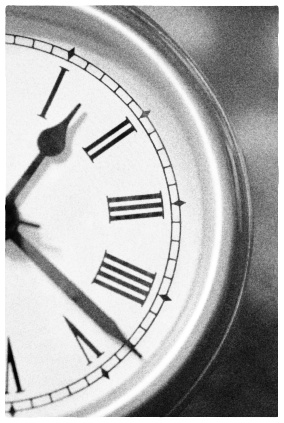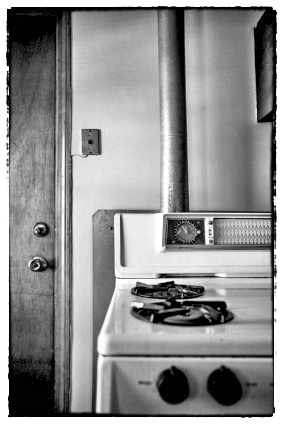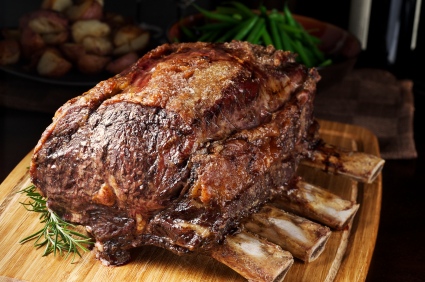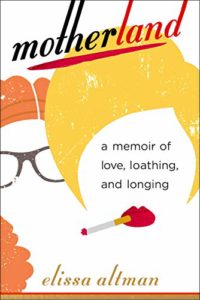It’s the very end of the year, and everywhere you look there are lists. There’s even a song about making lists. It’s engrained in our culture—like list-making is going to keep us better organized. Or force us to harness our national ADD — our Puritan work ethic now on acid and requiring us to keep all of our professional and domestic balls, as it were, in the air at the same time while streaming Dancing with the Stars on any of our digital devices — into some sort of usable, productive energy, instead of the annoying kind that you can’t shut off. The kind that wakes you up at 2:51 every morning, compelling you to check your email on your iPhone just because it’s there and after all why not, since you’re awake.
There are must-read lists; must-buy lists; must-do lists; top-ten lists; top-100 lists; best-dressed lists; worst-dressed lists. There are lists of things to bake; to clean; to wrap; to send; to discuss with your accountant; to visit; to learn to sing. Those are the practical lists. Practical lists are often curated, especially when you share them with others. Then they become very special.
There are also psychic lists, which often tend toward the more metaphysical and spiritual. Psychic lists are very personal, and no one but you is interested in them. Really. Not necessary to share. I heard The Dalai Lama speak a month or so ago, and he said “Why does everyone need to tell everyone else that they’re a Buddhist? Why the bumper stickers?” Psychic to do lists sometimes go like this: Slow down. Offer thanks. Be gracious. Meditate. All very nice and worthy and important. And by January 15th, you’re cutting someone off in your coffee shop drive-thru and flipping them the bird because of an oversize, hyper-branded, artificially-flavored caramel-with-a-squiggle-of-fake-mint-syrup latte that you want FIRST and will kill to get to before anyone else. Peace Be With You. Namaste.
At the end of this crazy, wacky, atrocious holiday season that was punctuated by a mass shooting across town, two strains of the flu, and a funeral, it’s honestly difficult to get excited about stuff to buy, stuff to want, stuff to need. It all seems superfluous and slightly ridiculous, so rather than approach it from a consumerist point of view, I decided to fling my own personal lasso far and wide, and talk about the best of the bests, the best of the worsts, the things that landed on our cultural playlist, and the stuff that maybe we should be seeing more of. There are books — incredible new books, but also, incredible old books that sneak back onto my nightstand every New Years. There are concepts and fashions culinary and not, and sayings that have crept into our lexicon in the last twelve months. There’s even some design.
Here it is: the good, the bad, and the completely annoying.
The Best Books of 2012
It’s been a wonderful year for books about food. As someone who spends a good number of my daylight hours as a cookbook/food editor (when I’m not writing), there’s a lot that I see, a lot that I cook from, and a lot to fall in love with. Here are my favorites:
Canal House Cooks Every Day by Christopher Hirsheimer and Melissa Hamilton: Big, beautiful, this is the go-to book of the year, and might be for years to come I reckon. Worth its weight just for the ham-with-golden-breadcrumbs recipe alone, the writing is exquisite, and one gets the sense that these two ladies (who have arguably changed the way the world thinks about what food looks like on the printed page) are standing in your kitchen with you, handing you a clean dishtowel and patting you on the back.
Kitchen Diaries II by Nigel Slater: And speaking of exquisite writing, I have a wild, passionate crush on Nigel Slater. His books are everywhere in my house, but when I received his second diary volume, I realized why: Nigel is a master of the art of culinary simplicity. He makes it okay to wake up thinking about what you’re going to have for dinner. He makes it okay to want to feed everyone and anyone who crosses your threshold even if you have nothing in your larder but bread and cheese. He just makes it okay. Period.
Roots by Diane Morgan: A few years back, Diane and I had lunch together at Momofuku, and she told me she had an idea for a big, beautiful book about root vegetables. I could see it in my mind’s eye, but when this magnificent tome arrived, I howled with glee. Diane’s recipes are historically stellar, but the ones herein hit an entirely new level: they’re totally sophisticated but accessible, and the writing is informative and completely engaging. If you never thought you could be engaged by a turnip, you were wrong.
Jerusalem by Yotam Ottolenghi and Sami Tamimi: You know, of the upholstered bookcover Ottolenghi. When Ottolenghi’s Plenty arrived last year, I cooked from it until it fell apart. I planned a trip to London just so I could hit every Ottolenghi outpost. Jersusalem is of the same can’t-stop-cooking-from-it ilk, but by sheer virtue of the fact that it’s the result of the professional marriage and friendship of Ottolenghi (an Israeli) and Tamimi (a Palestinian), the food is other-worldly and one finds oneself stamping one’s foot and demanding to know why — if these two guys from opposite sides of the fence can cook together and go into business together and create love and kindness in the most deliciously magnificent of ways — everyone can’t just stop fighting and sit down and break bread together once and for all.
Burma by Naomi Duguid: Traveling to Burma is suddenly on everyone’s dance card; it’s like China in 1975, when every American with the means and inclination was traveling to Beijing because, as my grandmother used to say, “Nixon opened China.” Well, there are some folks — brave anthropologists and ethnoculinarians — who don’t wait until things become safe and cushy; they just go. They go to learn, to study, and to bring back the flavors of a culture that might otherwise never be experienced; Naomi Duguid is one of these people, and her book, written and researched long before Burma landed on the Touk Tour schedule should be treasured for its flavor, its intelligence, and, like all of Duguid’s books, wisdom.
Vietnamese Home Cooking by Charles Phan: Vietnamese cookbooks can, by their nature, sometimes be quite complicated, mirroring the cuisine’s mouth-filling layers of flavor and heat and spice. Charles Phan’s book, however, is a paean to the way the restaurateur and chef/owner of The Slanted Door (my favorite spot in San Francisco) eats and cooks once he leaves his massive restaurant kitchen. Not meant for those of us who like to geek out on taking 3 days off from work to make Pho, this book gets you cooking this outrageously delicious, simple food quickly, and peppers the process with Phan’s gorgeous personal stories.
The Sprouted Kitchen by Sara Forte: “Healthy and delicious” is a phrase that is tossed around so blithely that it results in almost simultaneous eye-rolling. The fact is — and I always say this — that Americans are challenged where vegetables and “whole foods” are concerned because a) we have no vegetarian lexicon in this country (although we’re getting better); and b) you can’t expect an entire nation of people who have spent their childhoods hiding their peas in their mashed potatoes to change overnight. There are some folks, however, who have come to the rescue, like Heidi Swanson (vegetarian), and Sara Forte (non-vegetarian). Sara’s book marries stunning visual imagery to remarkable recipes like cotija-stuffed poblanos, and baby spinach frittata with sweet potato hash crust. This is healthy food you really, really want to cook.
Morocco by Jeff Koehler: I came upon Jeff Koehler’s wonderful writing by happenstance: asked to judge a writing competition some years ago, I found myself reading a submission about sardines. I became so wildly engrossed in this short narrative about the tiny fish that, after the competition was over, I had to search out the author (the competition was blind, so I had to wait). A few years later, Jeff’s book on Morocco landed on my desk, and I was equally engaged because it succeeds at doing the one thing that the very best international cookbooks do: it transports the reader via crystalline writing that propels the smells and flavors of this stunning country right off the page. Cook from it or just sit down and read it from cover to cover; Koehler’s work is utterly transportive, informative, and mouthwatering.
The Best Older Books (Food and Non) for New Years’ Reading
Unplugged Kitchen (1996) by Viana La Place: A few years back, I fell in love with Unplugged Kitchen while renting a book-lined house in Mill Valley. Far more than the vegetarian cookbook it is, it is filled with family stories and simple, exquisite recipes from La Place’s Italian American background; ultimately, it’s a different way of thinking about food and life, and a return to a simpler, slower way of living day to day. A New Year’s book if ever there was one.
The Taste of Country Cooking (1976) by Edna Lewis: I bought my first copy of this book back in the late 1980s, when I was working at Dean & Deluca and Miss Lewis had come in to do some shopping (I distinctly remember her, tall and magnificent in a colorful dashiki, buying an enormous jar of oil-packed San Remo sun dried tomatoes). I read the book cover to cover, totally engaged by the concept of cooking seasonally, long before it became a quantifiable foodie trend.
Pleasures of the Good Earth (1991) by Edward Giobbi: We who are into what my grandmother used to call “kitchen arts” — canning, curing, preserving, kitchen gardening — tend to be arrogantly convinced that we started the trend, a belief that’s been reinforced by the “precious-izing” of the mundane, like canning jars (I just saw a pair of 1930s jars priced at $225 because of their “aesthetic”). Years before it became popular to dig up one’s front yard and turn it into an organic garden, or cure one’s own ham with nothing but salt and air, or can one’s own tuna, Edward Giobbi was doing just that in his northern Westchester home kitchen, believing with every fiber of his being that good cooking is inspired by what comes from the earth, and from one’s connection to it. His daughter, Eugenia Bone, is an apple that hasn’t fallen far from the tree. Read this book now, before deciding what to plant next spring.
Simple Cooking (1987) by John Thorne: A reminder that the best recipes and essays are neither flashy nor mean, Thorne’s highly personal collection runs the gamut from criticism of a well-known, fancified brand of cookware (“food sticks to it like crazy”) and breakfast cereal (“terrible stuff”), and the bemoaning of the loss of supper (our most intimate meal), to simple recipes for a cup of real hot cocoa or Cajun Boudin Blanc. So great and inspiring is this collection that one is compelled to subscribe to his online publication of the same name, and search high and low for the print editions, published since 1983.
Crossing to Safety (1987) by Wallace Stegner: Because no book has affected me more, or fed my soul more, I think of this book as a kind of nourishment; I read it at least once a year, usually right after New Years. No book has become more of a friend, and a companion. This simple story follows the lives of two couples — dear friends from different socioeconomic backgrounds — from Depression-era Madison, Wisconsin on through the birth of children, illness, war, and death. If you are lucky enough, as I am, to have the kind of very dear friends who function as your left and right arms, read this book. Now.
The Best and the Worst of the 2012 Trends (with a nod to Pinterest)
A fond return to kitchen as hearth instead of operating room. Three cheers for:
Farmhouse tables, rectory tables, Parson’s tables made of old, gnarly wood proudly bearing water/wine rings from celebrations with people you love.
Jumbles of mismatched dining room chairs, some from your grandmother’s house, some from the consignment shop, some stripped and repainted, some not.
Kitchens as dining rooms, and knocking down walls so cooking and eating and entertaining can happen in one place. Let’s leave the sculleries to Downton Abbey.
The use of canning jars to transport breakfast and lunch to school and work instead of Bisphenol-A laden plastic pretending to be sustainable just because it has green handles.
Dinged, dented, stained marble countertops that show life, instead of hyper-polished shiny granite ones. No hyper-polished shiny anything. My favorites are here.
Eating honest, rustic, and traditional food made by people you actually know who’ve been doing it for a long time, like my butcher, Steve Ford, who makes the best sausages I’ve ever tasted. He doesn’t do it because it’s hip; he does it because he’s a good, old-fashioned butcher with ties to his community, which is filled with sausage-loving Italians, Germans, Poles, and Brits. And me.
An unfortunate overabundance of twee, furtive nastiness, and pomposity masquerading as creative intelligence. Life is not a TED lecture. Thumbs down on:
White plastic Herman Miller-style knock-offs surrounding aforementioned farmhouse tables. One lit match and you have melted chairs. Furniture is not supposed to bounce, or survive in a landfill for the next thousand years.
Dining companions who look like The Smith Brothers and are too young to know what a Meerschaum pipe is, let alone smoke from one. You know who you are.
Asking your dinner guests to dress in coordinated outfits in case you want to create a palettized visual documentation of your personal convivium.
Making fun of gluten-intolerants, celiacs, and other hyper-allergic types. Not nice. Not kind. If it were you, you wouldn’t be laughing.
These words and phrases: Wheelhouse, circle back, the-thing-is, locally-sourced, hand-selected, and curated. As in “The thing is, creating simple recipes from exasperatingly twee, locally-sourced ingredients is totally in my wheelhouse, so let me think about how I can hand-select and curate some of the best and then circle back with you tomorrow.”
Farewell 2012; you’ve been alternately kind and gentle and rough and brutal on us. All we can do is hunker down now, eat well and feed the people we love real food prepared with thought and kindness, and look forward to the future.






